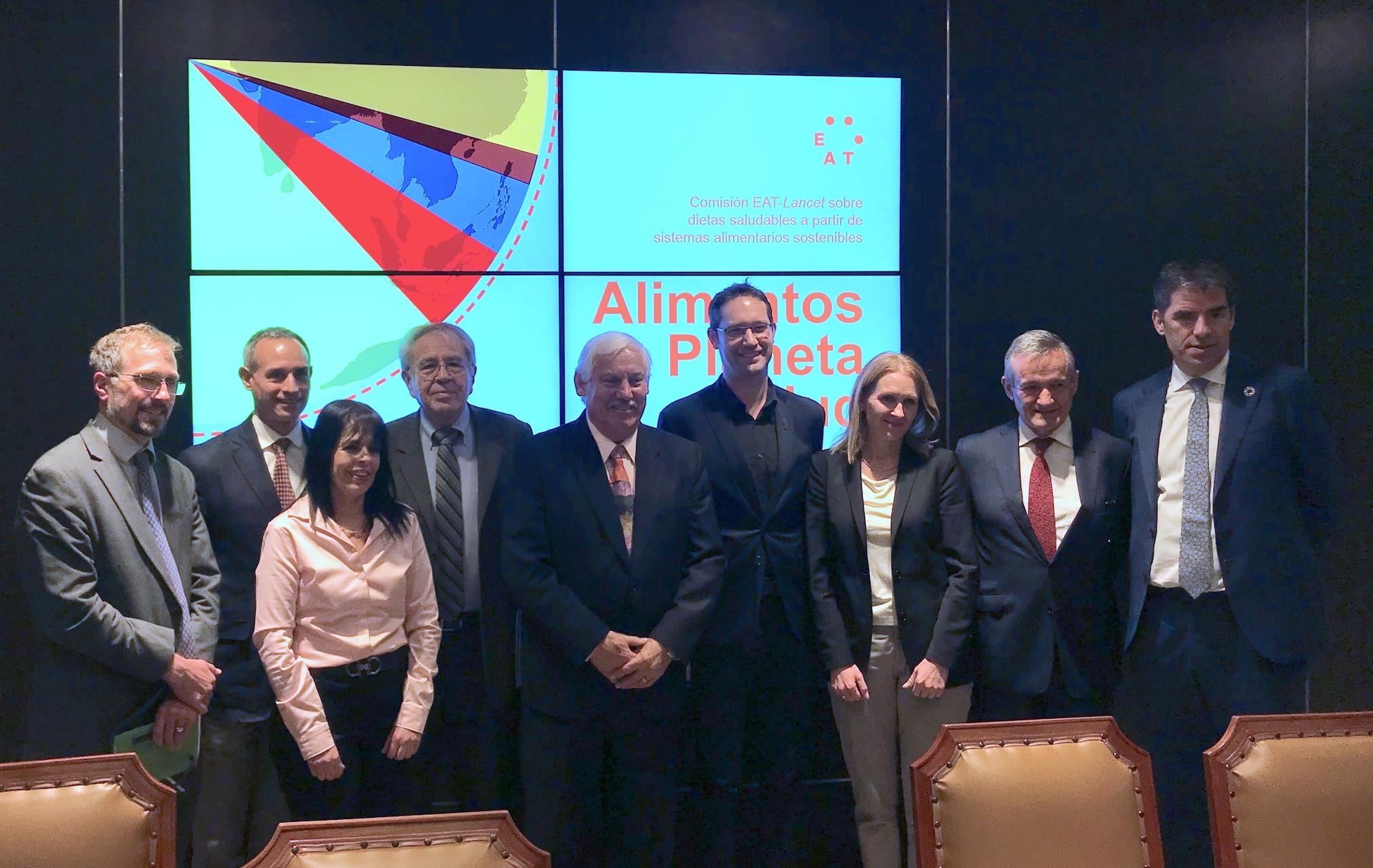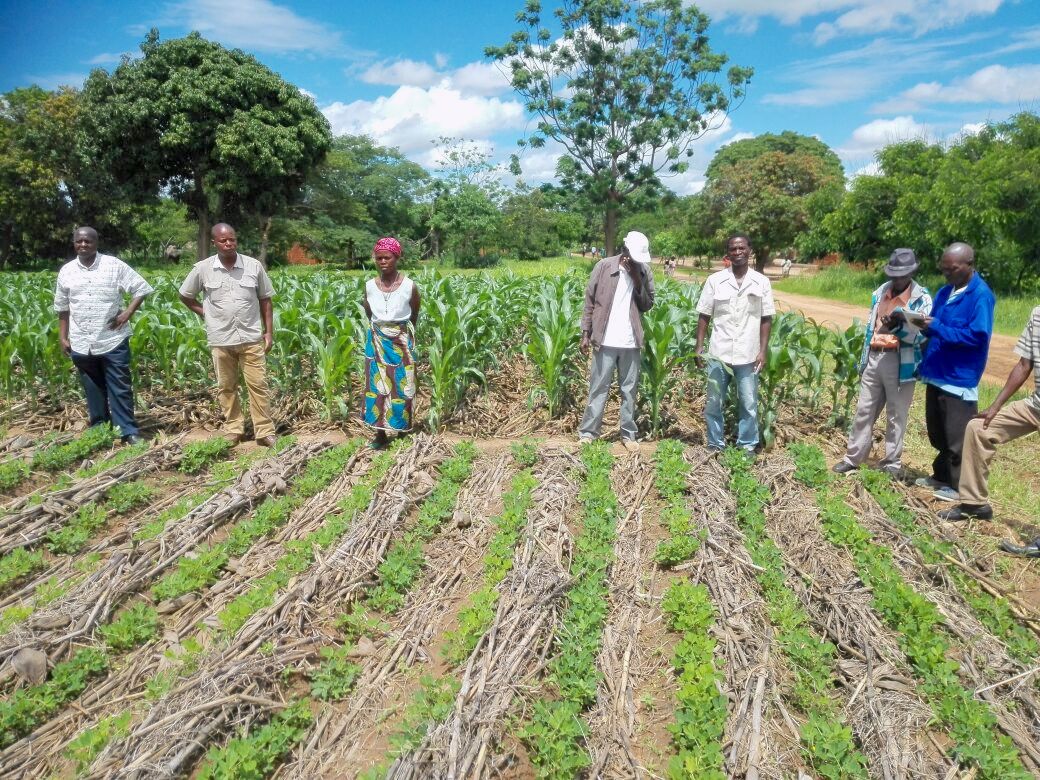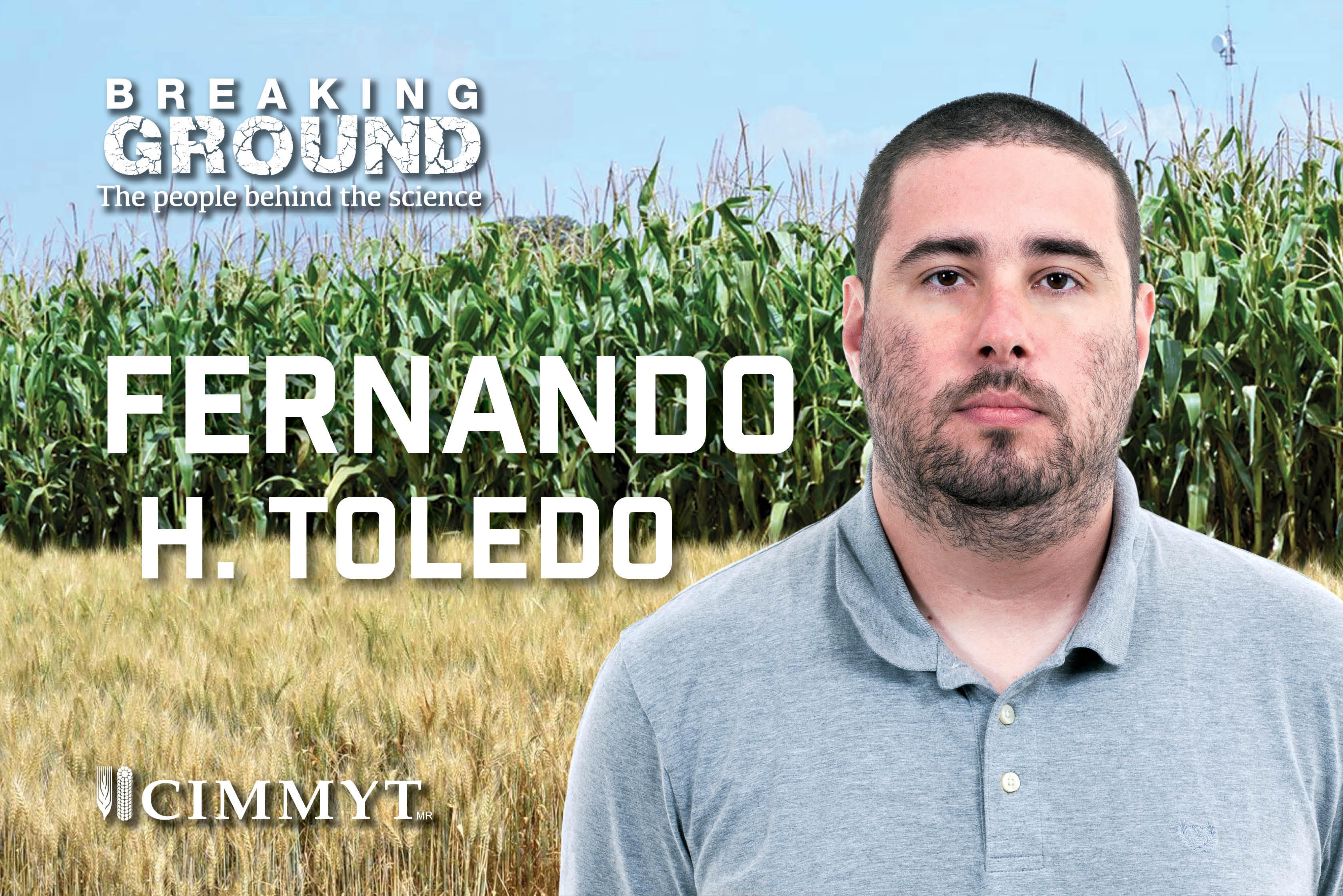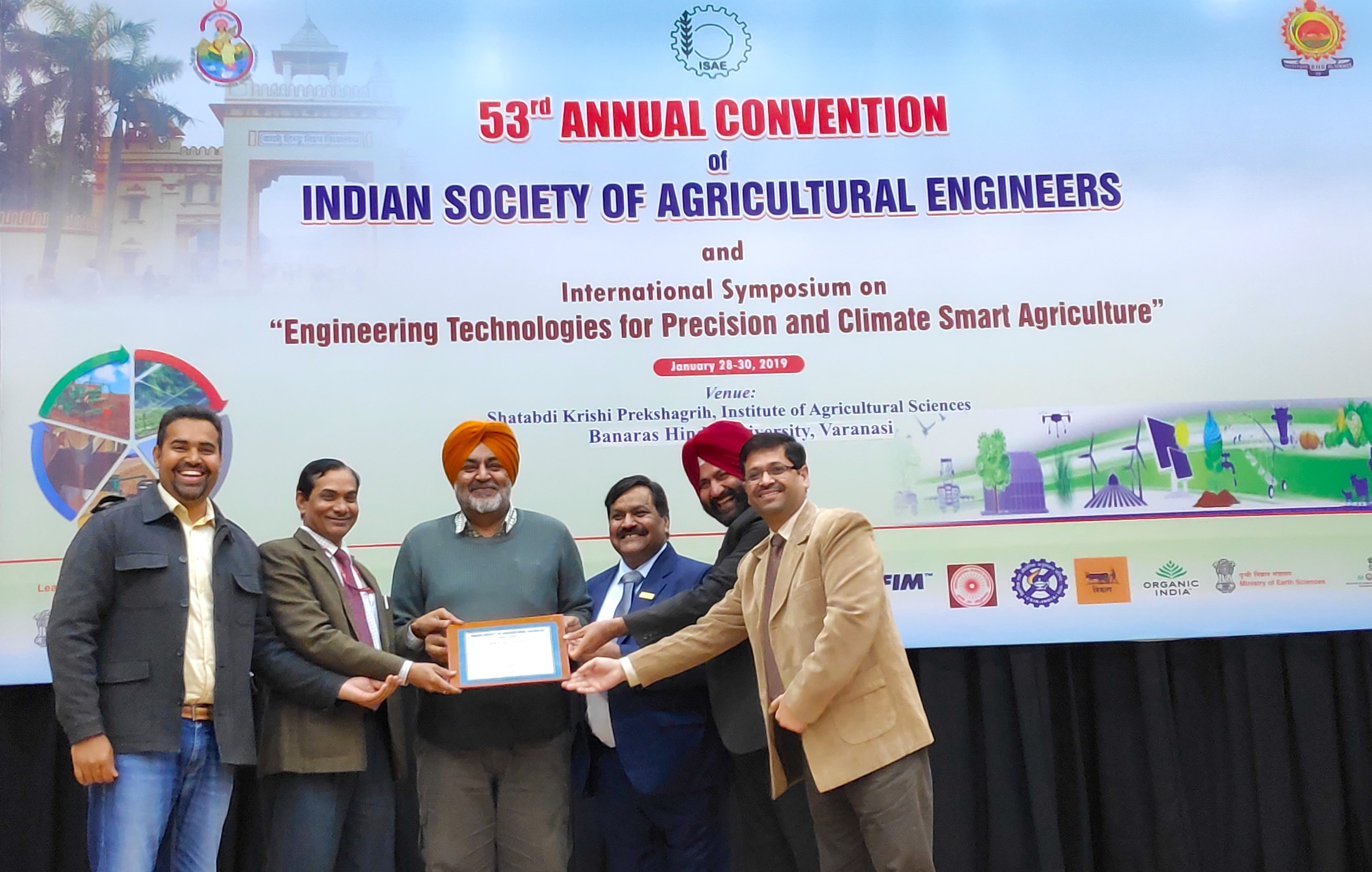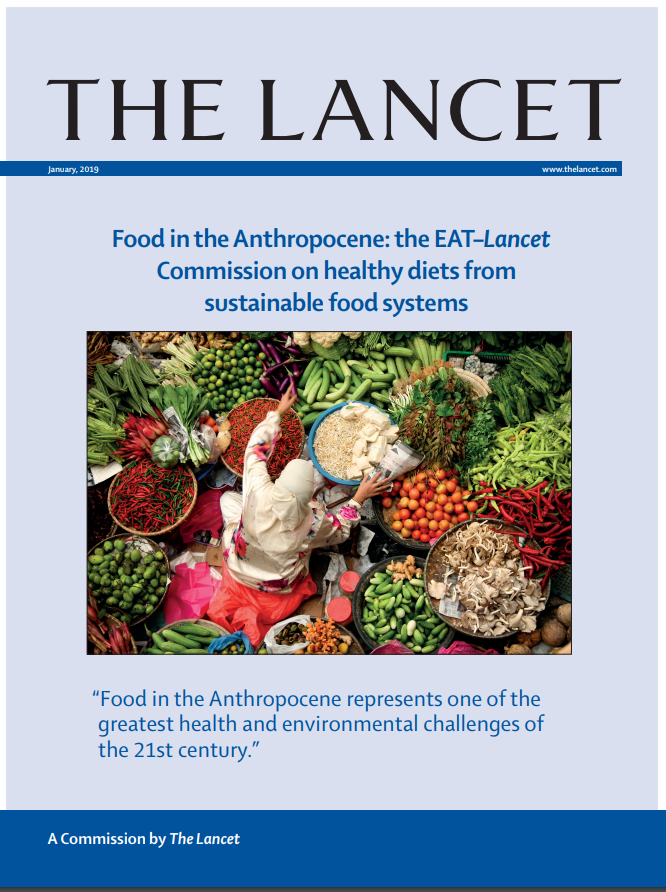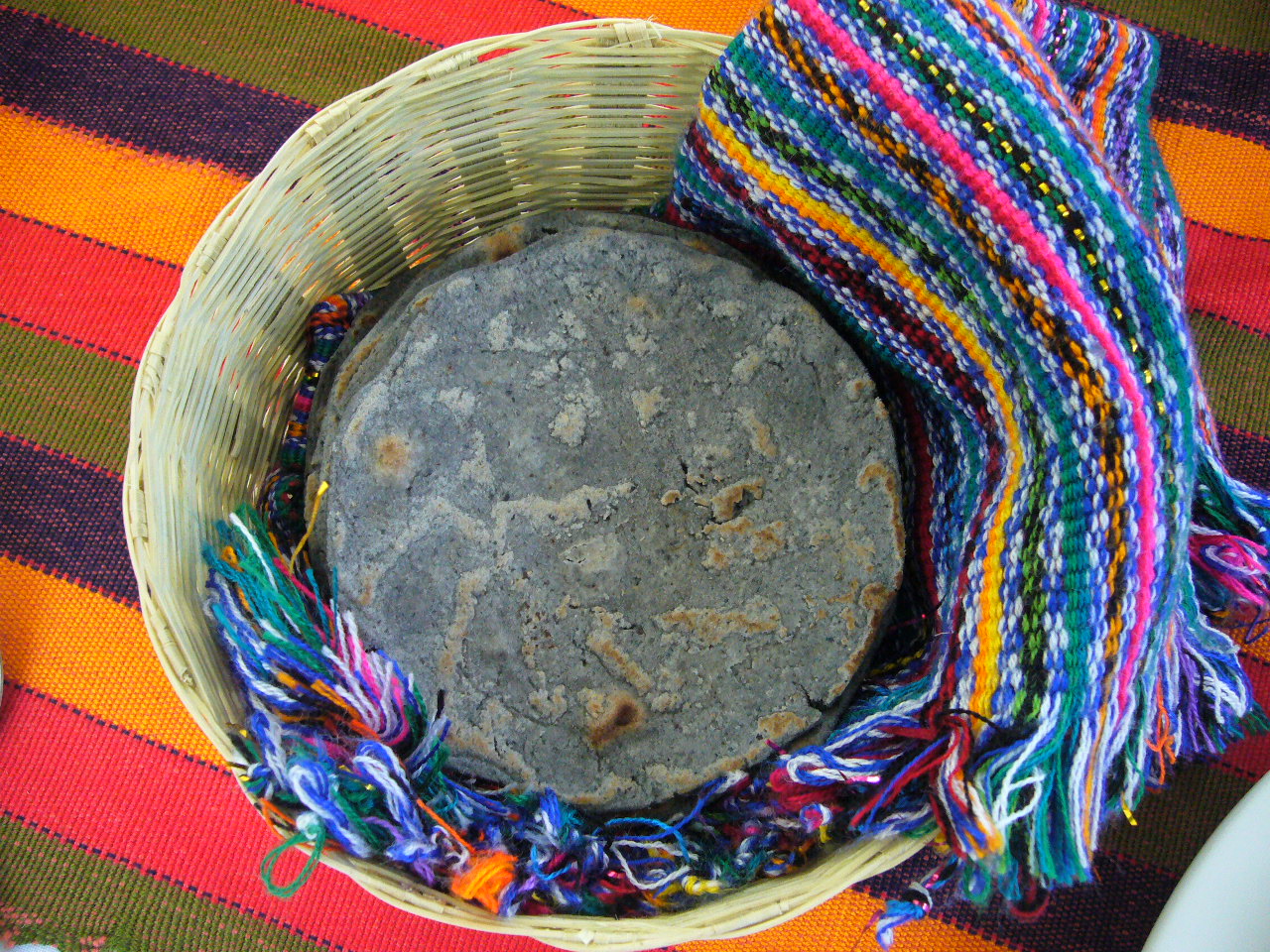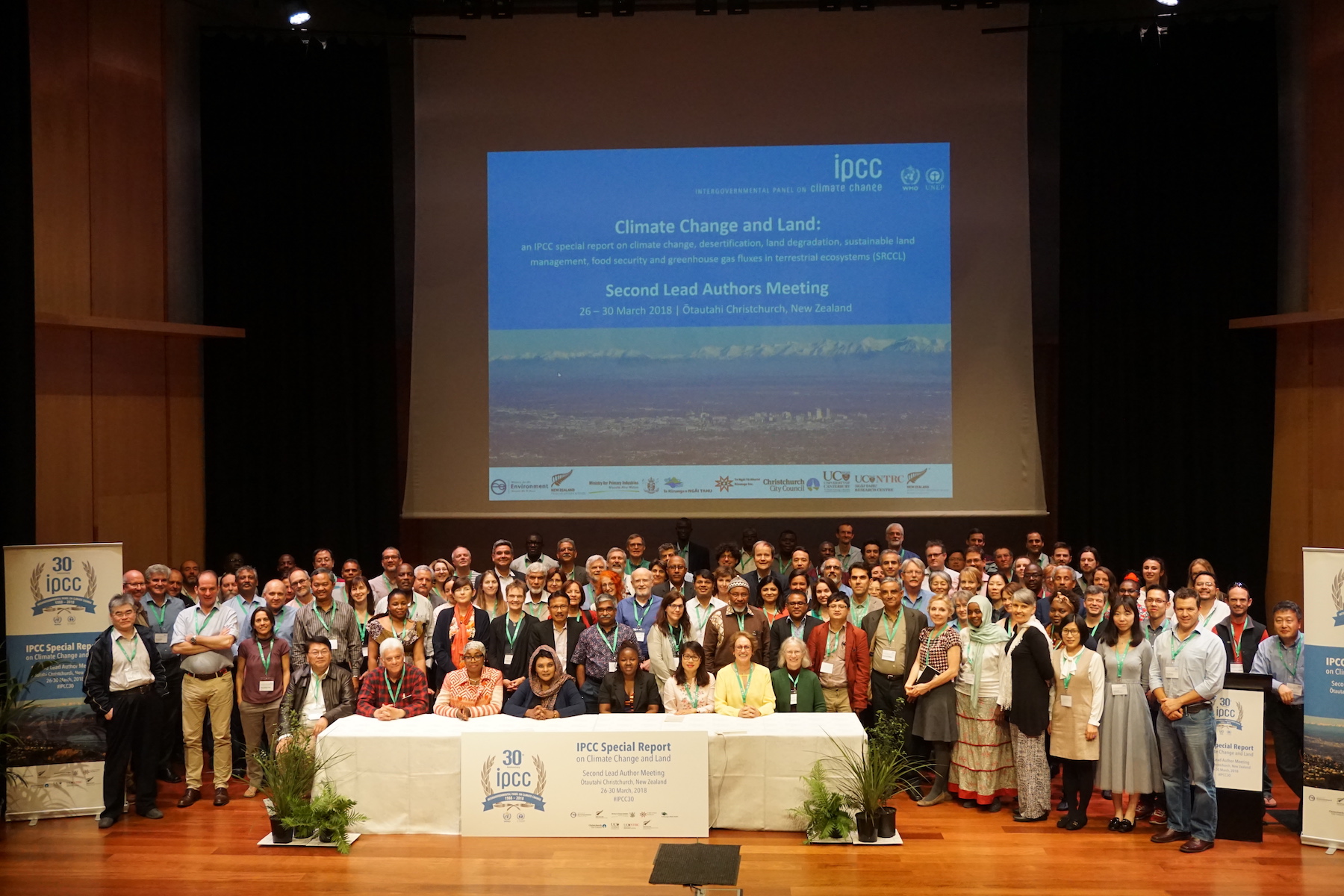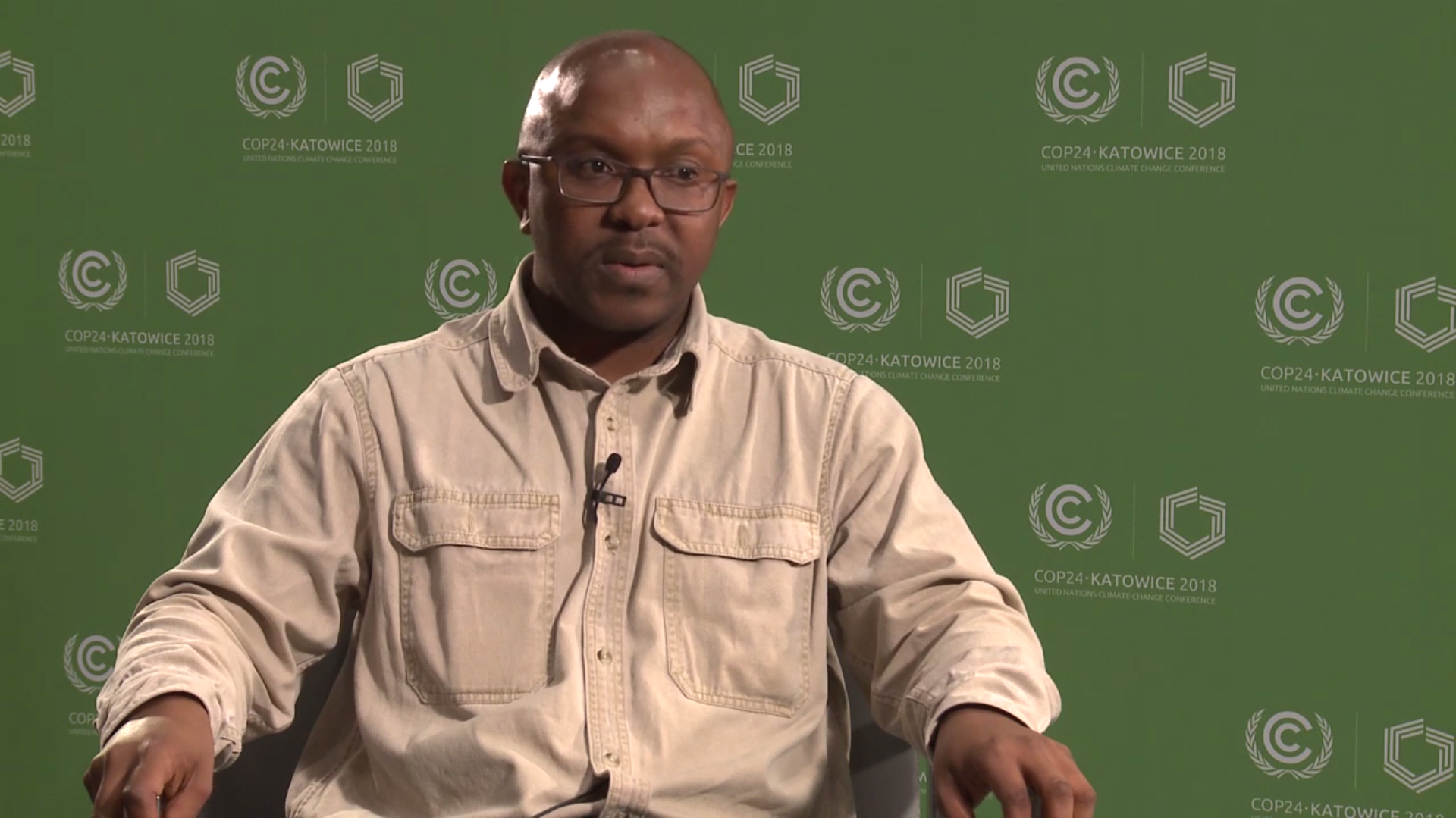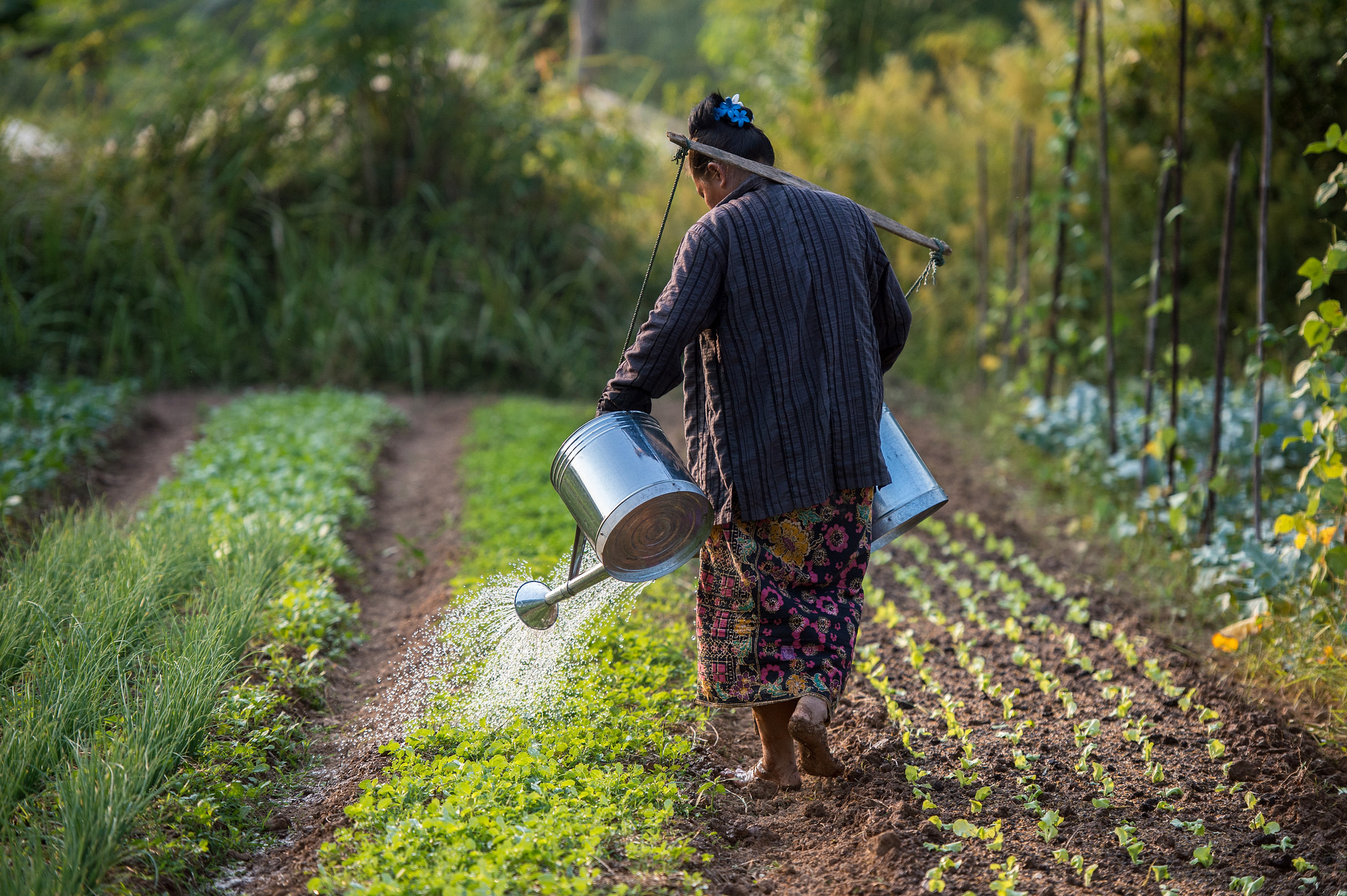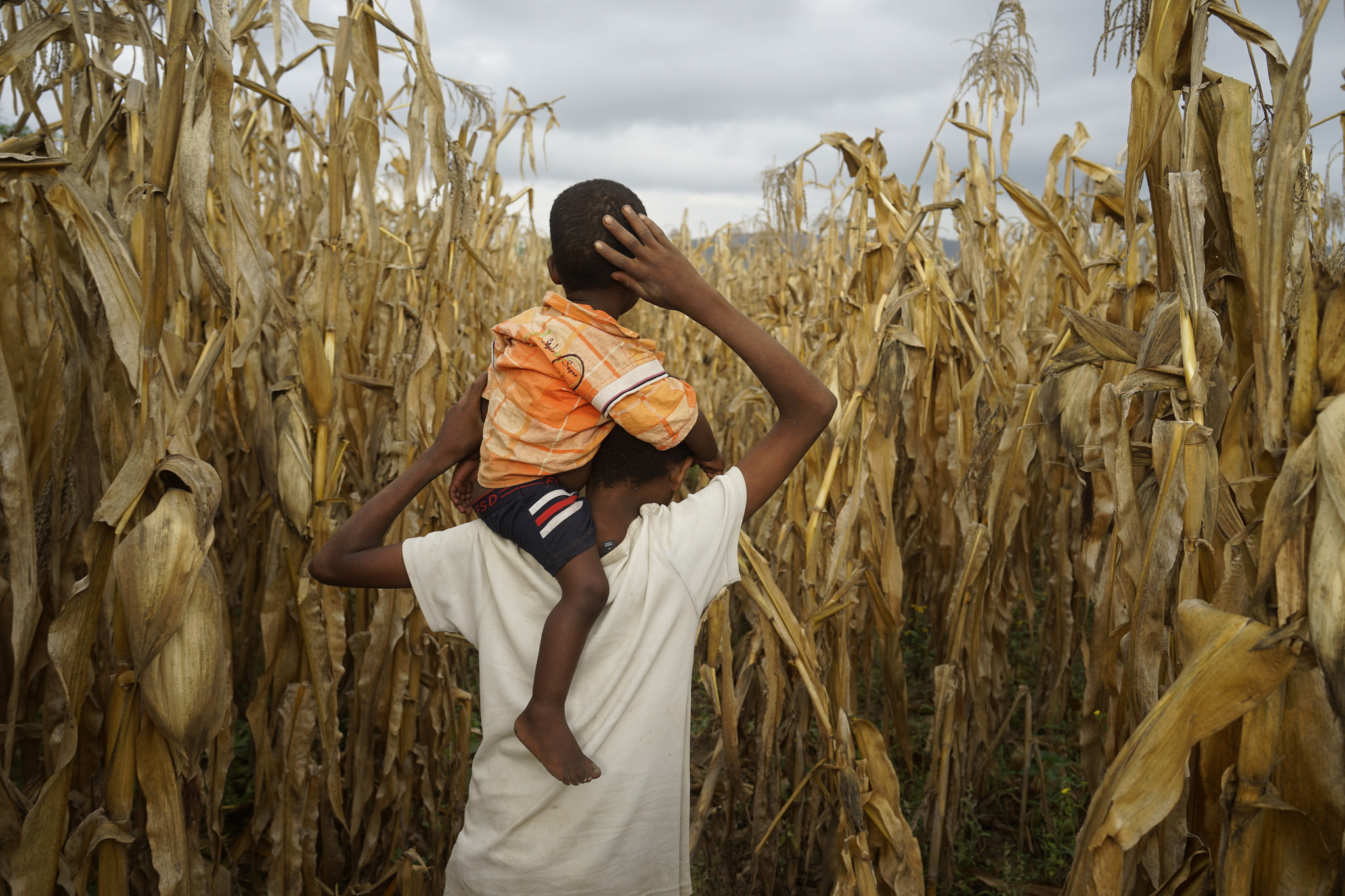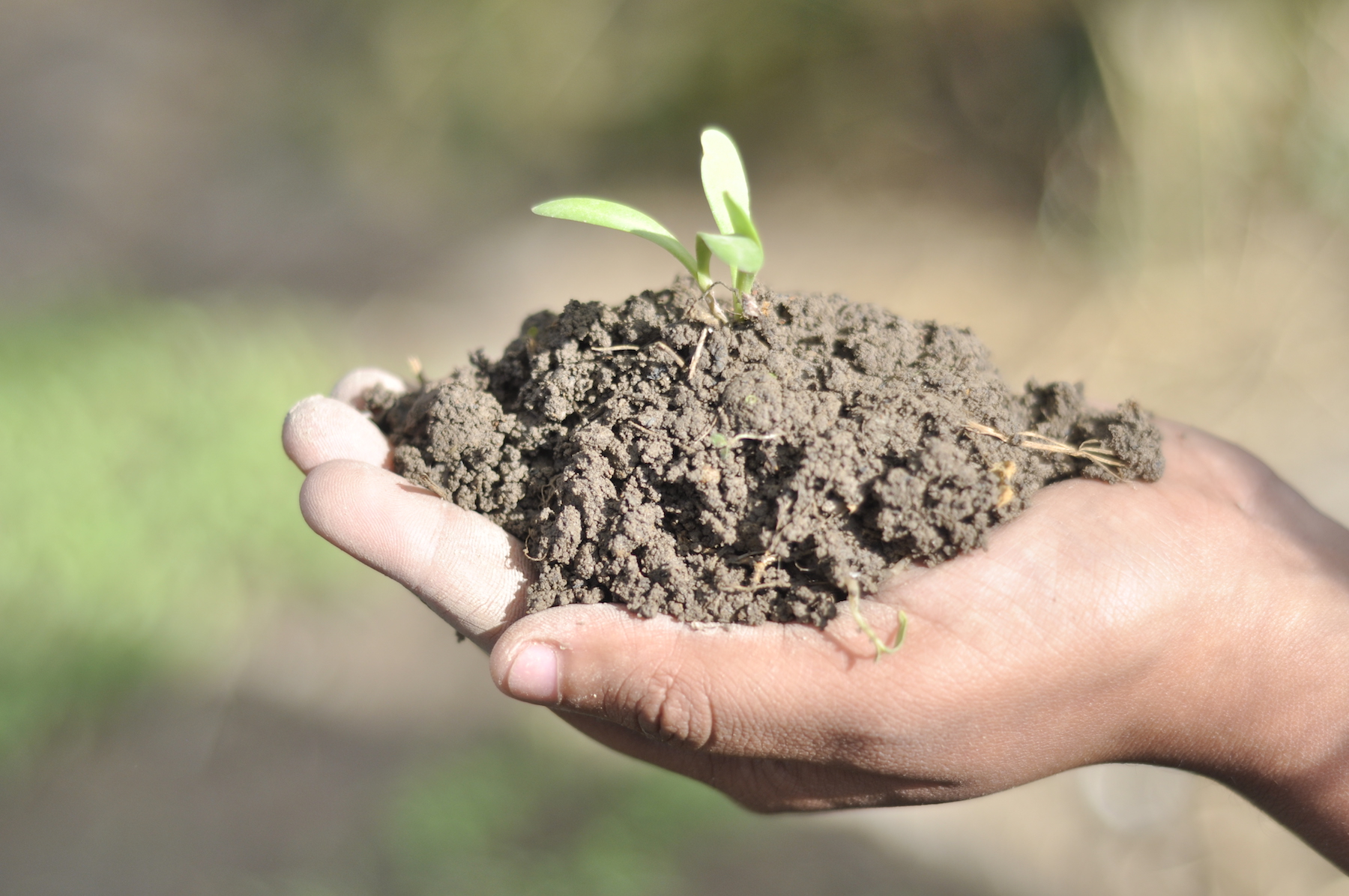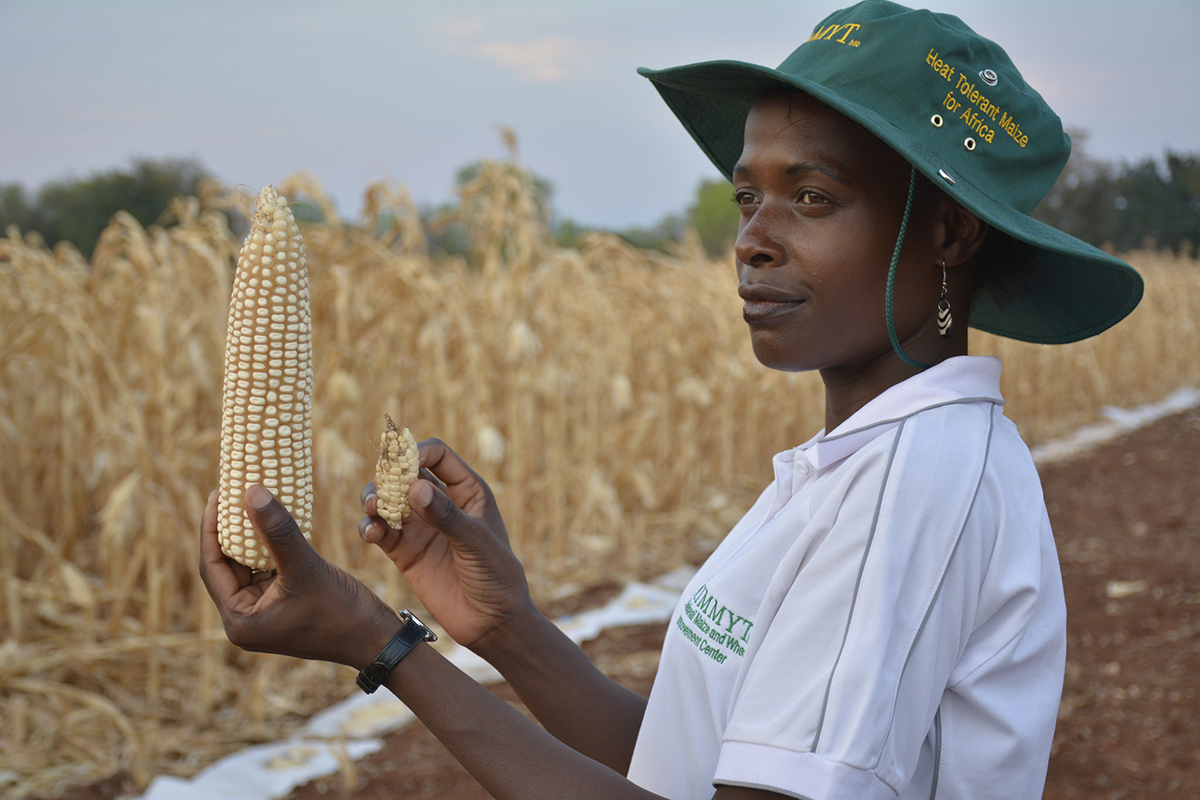Climate adaptation and mitigation
Climate change threatens to reduce global crop production, and poor people in tropical environments will be hit the hardest. More than 90% of CIMMYT’s work relates to climate change, helping farmers adapt to shocks while producing more food, and reduce emissions where possible. Innovations include new maize and wheat varieties that withstand drought, heat and pests; conservation agriculture; farming methods that save water and reduce the need for fertilizer; climate information services; and index-based insurance for farmers whose crops are damaged by bad weather. CIMMYT is an important contributor to the CGIAR Research Program on Climate Change, Agriculture and Food Security.
Becoming drought resilient: why African farmers must consider drought tolerant crops
 Climate adaptation and mitigation
Climate adaptation and mitigation
Source: Inter Press Service (15 Mar 2019)
For the past decade, CIMMYT has invested in breeding and strengthening the adoption of drought tolerant crop varieties across the continent.
Farmers key to realizing EAT-Lancet report recommendations in Mexico, CIMMYT highlights
 Climate adaptation and mitigation
Climate adaptation and mitigation
CIMMYT was invited to discuss the findings of the EAT-Lancet Commission report and its implications for Mexico.
Policy forum in Mozambique recommends scaling sustainable agriculture practices
 Capacity development
Capacity development
Unsustainable farming practices like monocropping are impacting soil health and reducing the productivity of farms.
Breaking Ground: Fernando H. Toledo researches new models of analysis under simulated scenarios
 Climate adaptation and mitigation
Climate adaptation and mitigation
Toledo’s research is multidisciplinary — it involves genetics and breeding knowledge, as well as statistics and computer science.
Experts analyze food systems at EAT-Lancet Commission report launch in Ethiopia
 Climate adaptation and mitigation
Climate adaptation and mitigation
Government officials, researchers and experts developed a list of recommendations going forward.
BISA and PAU awarded for collaborative work on residue management
 Climate adaptation and mitigation
Climate adaptation and mitigation
Joint team recognized for their work on rice residue management using the Super Straw Management System, or Super SMS.
New report calls for urgent diet and food system changes to sustainably feed world
 Climate adaptation and mitigation
Climate adaptation and mitigation
EAT-Lancet Commission offers a roadmap for a global food system that provides a healthy, sustainable diet for the world’s 10 billion people by 2050.
Best of 2018: Editors’ picks
 Capacity development
Capacity development
In 2018, we published more than 200 stories related to maize and wheat science around the world. Here are some of our favorites.
Breaking Ground: Tek Sapkota finds ways to reduce emissions from agriculture without compromising food security
 Climate adaptation and mitigation
Climate adaptation and mitigation
He is one of the lead authors of the “Special Report on Climate Change and Land” of the Intergovernmental Panel on Climate Change (IPCC).
SACAU’s Majola Mabuza at COP24: How soil can help meet climate targets
 Climate adaptation and mitigation
Climate adaptation and mitigation
“At the production stage, soils have an important role to play in reducing carbon emissions.”
The impact of climate inaction on food security
 Climate adaptation and mitigation
Climate adaptation and mitigation
The global food system needs to be transformed to respond to the health and nutrition needs of the future. To achieve this, however, there needs to be a strong global program to prevent greater threats from climate change.
New publications: Climate change impact and adaptation for wheat protein
 Climate adaptation and mitigation
Climate adaptation and mitigation
Farmers cite climate change as biggest challenge, says World Farmers Organization at COP24 talks
 Climate adaptation and mitigation
Climate adaptation and mitigation
Climate is the most important challenge farmers face, because “they’re just influenced by it and there is little that they can do,” explains Luisa Volpe of the World Farmers Organization.
Gratitude for soil
 Climate adaptation and mitigation
Climate adaptation and mitigation
If we take care of our soils, our soils will take care of us.
In pictures: Six agricultural innovations combating climate change
 Climate adaptation and mitigation
Climate adaptation and mitigation
With agriculture on the agenda at COP24, we highlight six innovations improving resilience and productivity for agriculture.

